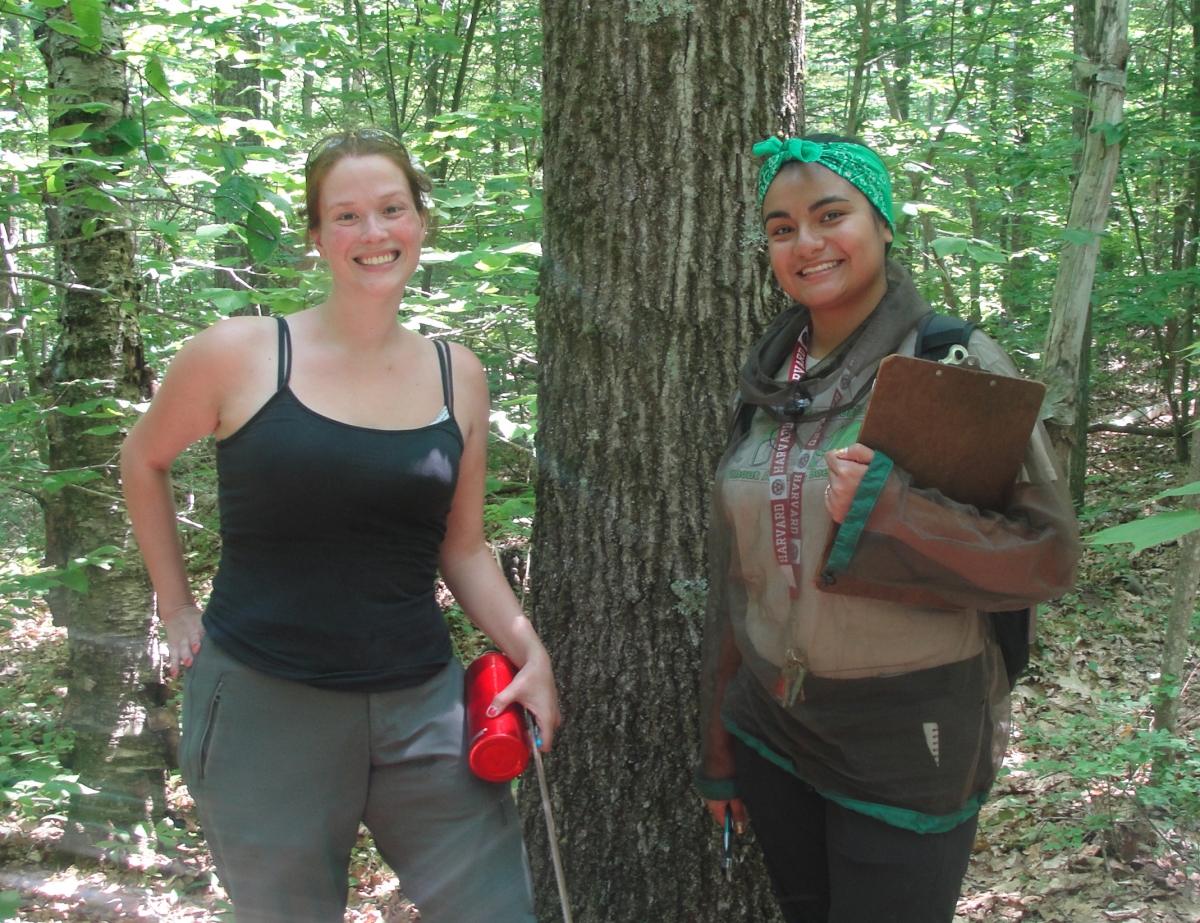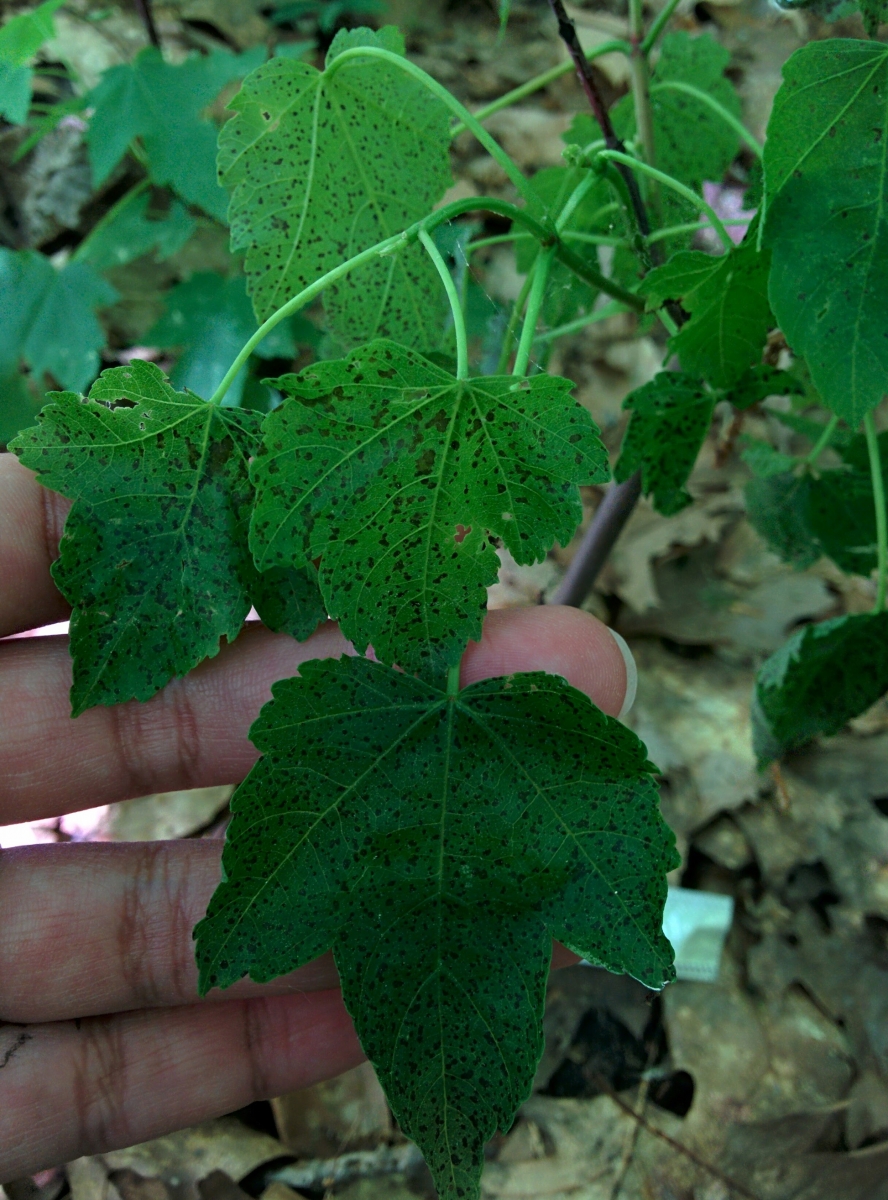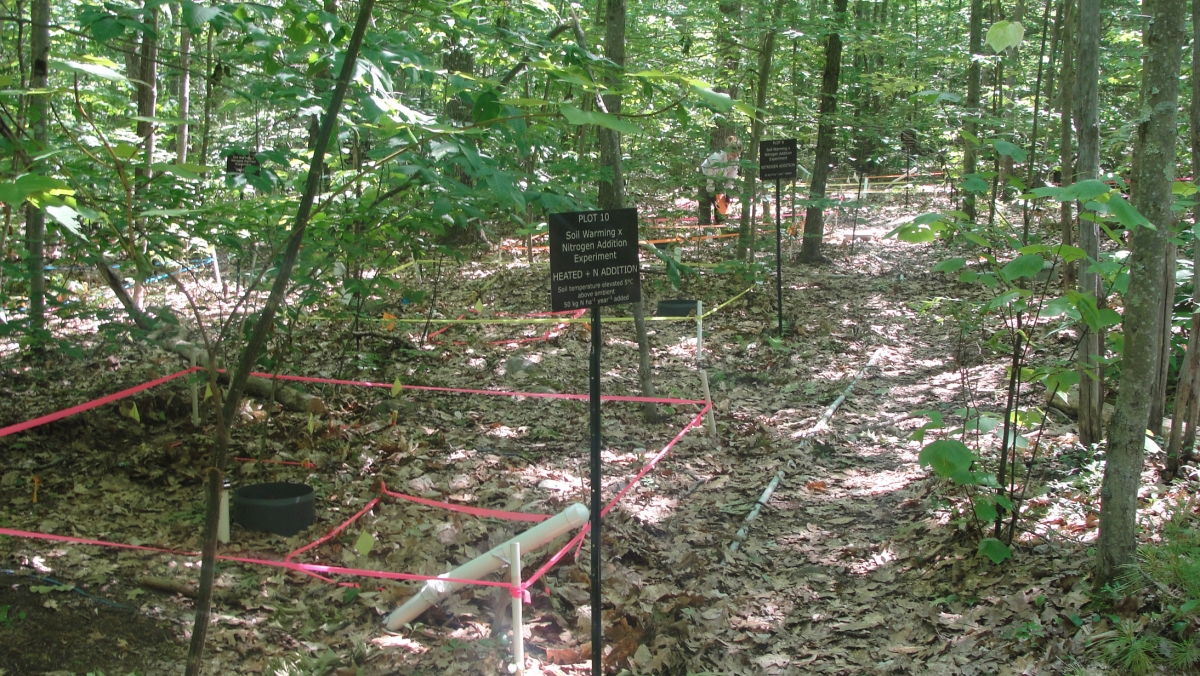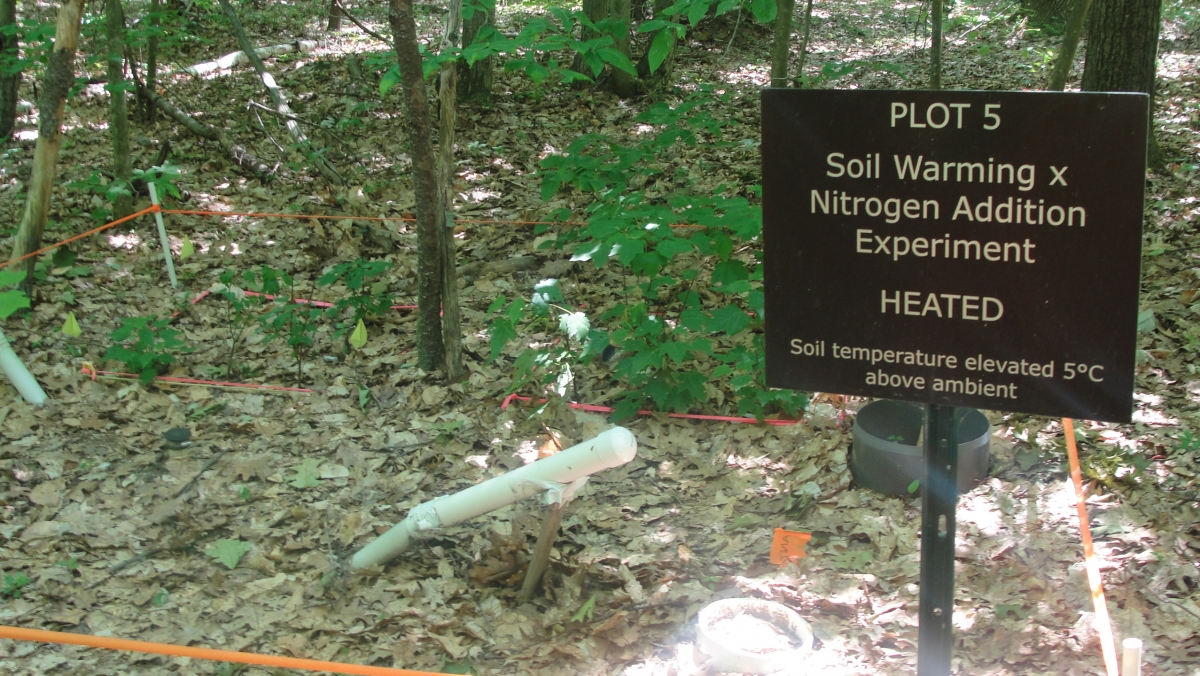You are here
Field Experiments: The Struggle is Real
One of the first things that struck me on my way to Harvard Forest from the Boston airport was the vivid scenery. Coming from the heart of Texas, I couldn’t believe all the lush forests and lakes that surrounded me. It was all so surreal that it took me a few hours to convince myself I was actually here. What I was excited for most was the fact that for the next 11 weeks I would get to spend almost every day outside in this beautiful scenery doing field research! Little did I know at the time, however, Mother Nature was not going to let my research proceed as smoothly as I was expecting. One of the first lessons I learned here was that field experiments almost never work out the way you plan them to.
 Despite all the setbacks, which I’ll explain in detail later, I’m so happy that I was actually given the opportunity to work at Harvard Forest this summer. Of all the summer programs that I was planning to apply to, Harvard Forest was my first choice. It’s my dream to one day be able to conduct my own research on invasive species, so I had been hoping to get the chance to work with either Laura Hancock or Julia Wheeler on their garlic mustard projects to get some experience. When I found out I got a position to work under Julia Wheeler, it was like a dream come true! Thus, this summer my project is to study the effects of garlic mustard on red maple trees.
Despite all the setbacks, which I’ll explain in detail later, I’m so happy that I was actually given the opportunity to work at Harvard Forest this summer. Of all the summer programs that I was planning to apply to, Harvard Forest was my first choice. It’s my dream to one day be able to conduct my own research on invasive species, so I had been hoping to get the chance to work with either Laura Hancock or Julia Wheeler on their garlic mustard projects to get some experience. When I found out I got a position to work under Julia Wheeler, it was like a dream come true! Thus, this summer my project is to study the effects of garlic mustard on red maple trees.
Garlic mustard is an invasive plant from Europe that has been running amok in the forests of eastern North America since the 1800’s. It’s such a tiny plant compared to some of the huge red maples I’ve seen, but it can potentially do a lot of damage to red maple seedlings. Garlic mustard is known to be allelopathic, which means it can release certain chemicals into its environment that can attack and inhibit the growth and development of other plants. Specifically, garlic mustard produces what are called glucosinolates which attack the mycorrhizal fungi that red maples depend on. Mycorrhizal fungi have a mutualistic relationship with red maples, meaning they help each other to survive. The mycorrhizal fungi attaches to the roots of red maples, allowing the trees to take up more nutrients while taking some of the sugars the trees produce in return.
Thus, garlic mustard causes indirect harm to the red maples by attacking the fungi, and this can have a negative effect on future red maple tree recruitment. If fewer red maple seedlings survive because of garlic mustard invasion, the composition of the forest canopy and understory may change, affecting all the other species that depend on red maples as well. Therefore, it’s important to gain a clearer understanding of how garlic mustard can affect the survival and development of young red maple seedlings.
In order to study this, red maple tree seedlings were planted in 20 plots in the forest last October. Some of the seedlings were planted with garlic mustard and some were not. This experiment included other treatments as well, since garlic mustard invasion isn’t the only threat that red maples face. Climate change and agricultural runoff may also affect red maple tree recruitment and development, so some of the plots were also given soil warming and nitrogen fertilization treatments. My job for the summer is to track the growth of the red maples by taking weekly height measurements, leaf counts, and leaf surface area measurements. At the end of the summer, I’ll compile all of the growth data together and perform statistical analyses to determine what impact each of the treatments had on the seedlings’ development. Sounds simple enough, right? But, as I mentioned before, field experiments hardly ever work out the way you want them to.
Although I was excited to work with the garlic mustard, by the time I got here in May, it had all died out from the plots. Part of me was extremely disappointed, but another part of me was relieved that there were still parts of the forest where this pesky invasive couldn’t survive. Still, the experiment must go on! The garlic mustard was still present in the soil for a fair amount of time, so if it was going to have any effect on the seedlings, we might still see the results in the final data analysis.
Unfortunately, the garlic mustard wasn’t the only casualty over the winter months. Apparently, several red maples died from mice foraging, though according to Julia, it’s a miracle more didn’t die. “You can’t keep a good maple down,” she always says. Though many of the seedlings had most of their important bark stripped, come spring time they were bursting out with new buds and lateral shoots. Julia told me she was worried for a while that most of them would die during the winter, but by the time I came in May, nearly all of them were flourishing. Sadly, their good health wouldn’t last long.
Just a few weeks into the summer the red maples were being devoured again. The caterpillars and deer were ruthless. No red maples died immediately, but the excessive herbivory definitely weakened them. The highest number of leaves I counted on a maple in the beginning was over 100, with an overall average of maybe 50 or 60 leaves. But now the highest leaf count is in the 70s, with maybe an overall average of 20 or 30 leaves. Many of the poor maples are in the single digits now, and they’re all struggling to make up for the lost carbon storage.
 A few weeks later, it seemed like the worst of it was over, but then the weather started acting up. Julia told me that it had been uncharacteristically hot and dry for a while. Being from Texas, I’m used to hot and dry in the summer, so I didn’t even pay attention to it, but the maples were definitely not used to this weather. For a while, nearly all the seedlings were drooping and beginning to show signs of wilting. Again, none of the maples died immediately, but it weakened them much further. We finally got some rain and cooler weather, and the maples all started to perk up again, but I think it was too late for some.
A few weeks later, it seemed like the worst of it was over, but then the weather started acting up. Julia told me that it had been uncharacteristically hot and dry for a while. Being from Texas, I’m used to hot and dry in the summer, so I didn’t even pay attention to it, but the maples were definitely not used to this weather. For a while, nearly all the seedlings were drooping and beginning to show signs of wilting. Again, none of the maples died immediately, but it weakened them much further. We finally got some rain and cooler weather, and the maples all started to perk up again, but I think it was too late for some.
Not long after, we began to see spots on some of the leaves. A pathogen had made its way into the plots. With only three weeks left in the program, the pathogen is beginning to kill the red maples off one by one. I was supposed to be tracking the growth of the maples all summer, but because of all the hardships they faced, I find myself tracking their survivorship instead. The moral of the story is that you need to be extremely flexible when it comes to field experiments and be prepared to adjust your research focus. The struggle is so real. Hang in there red maples!




